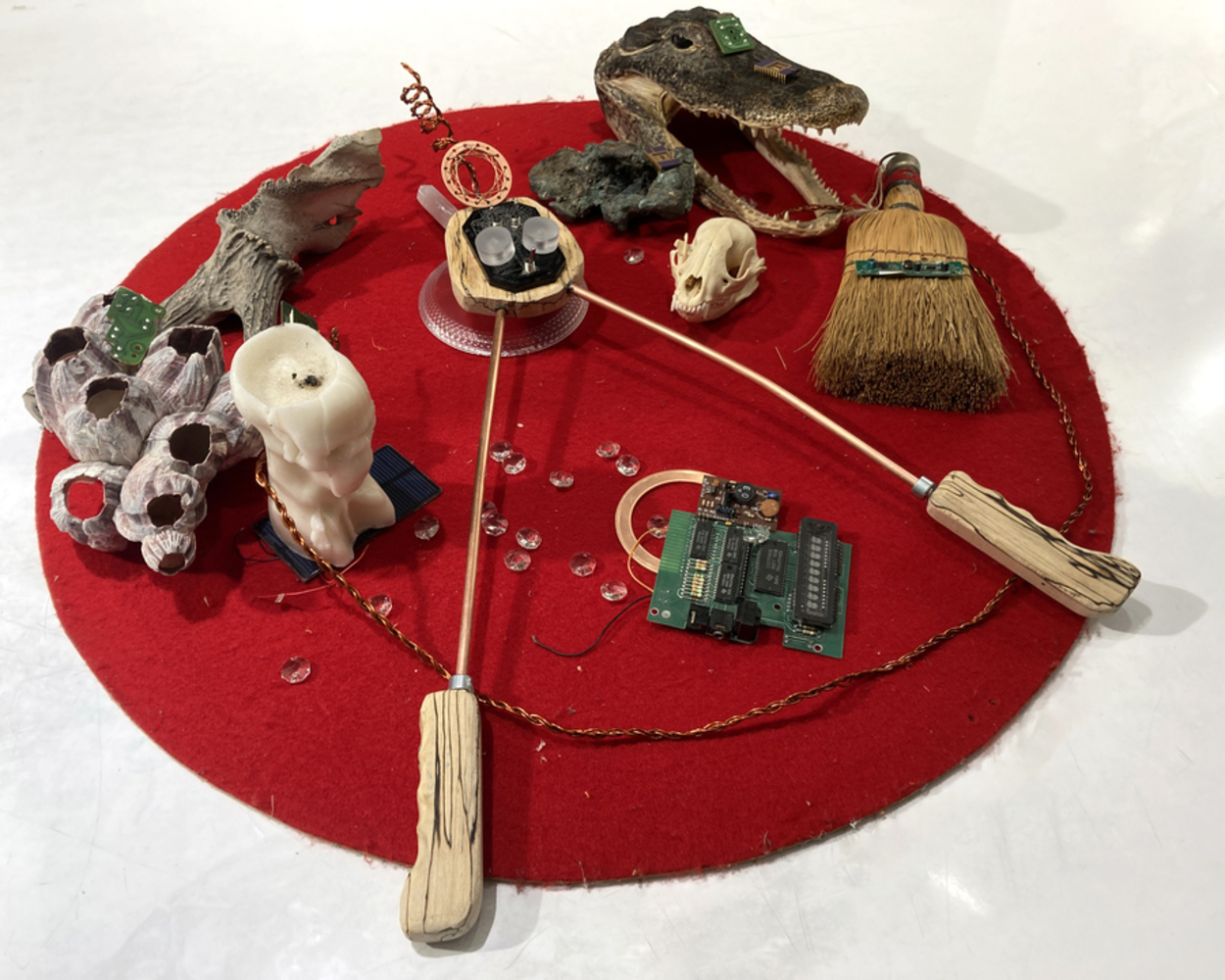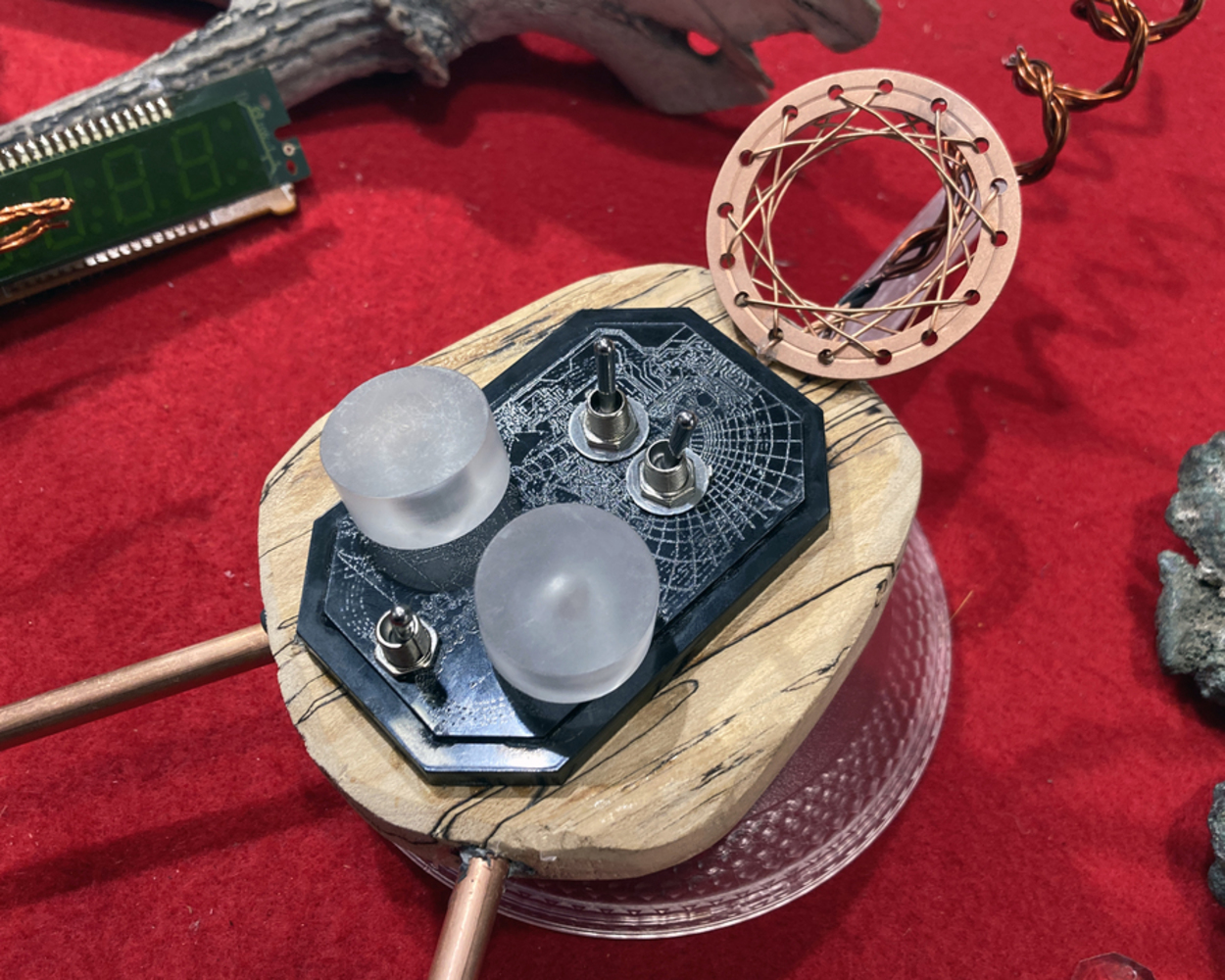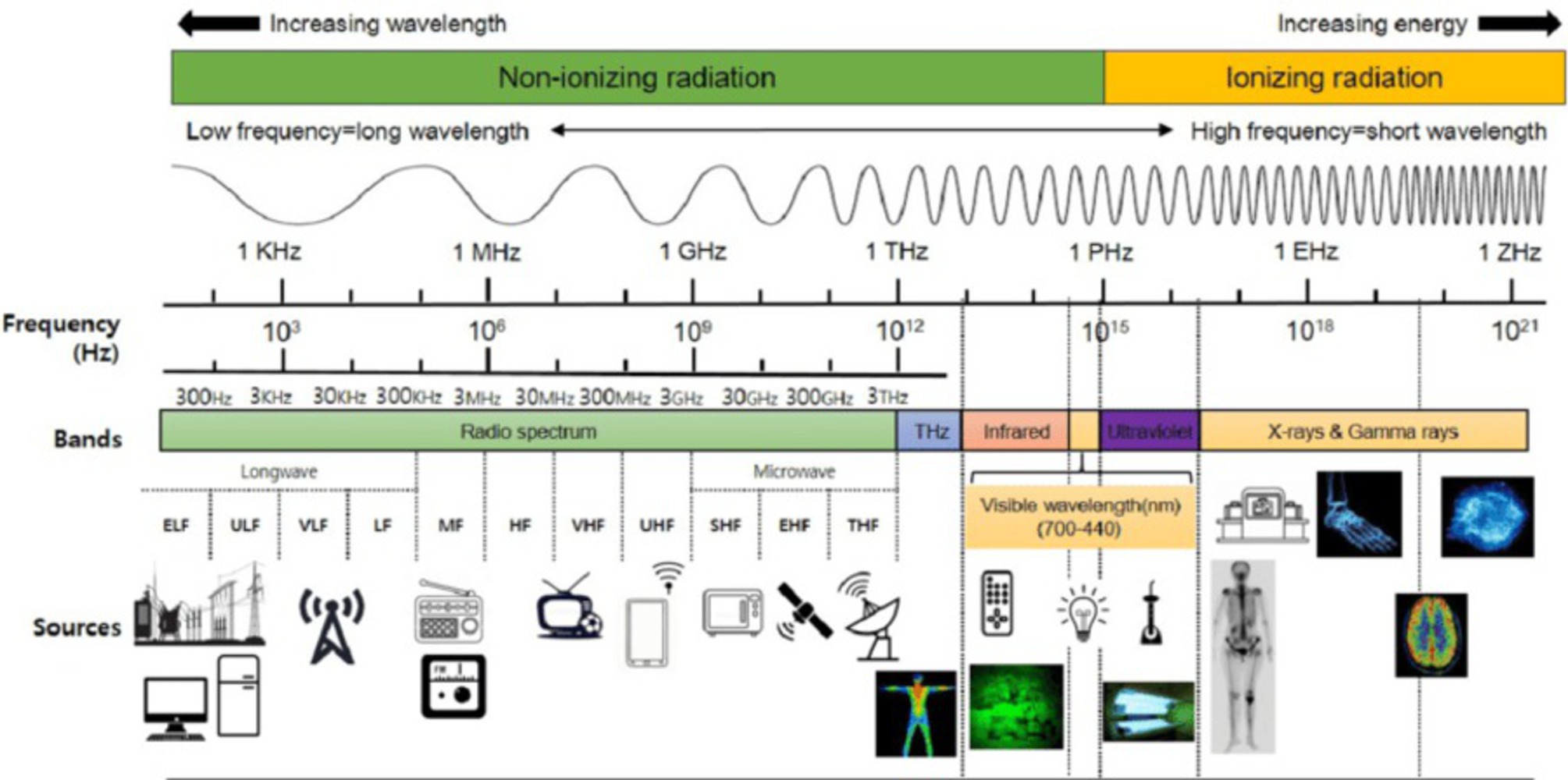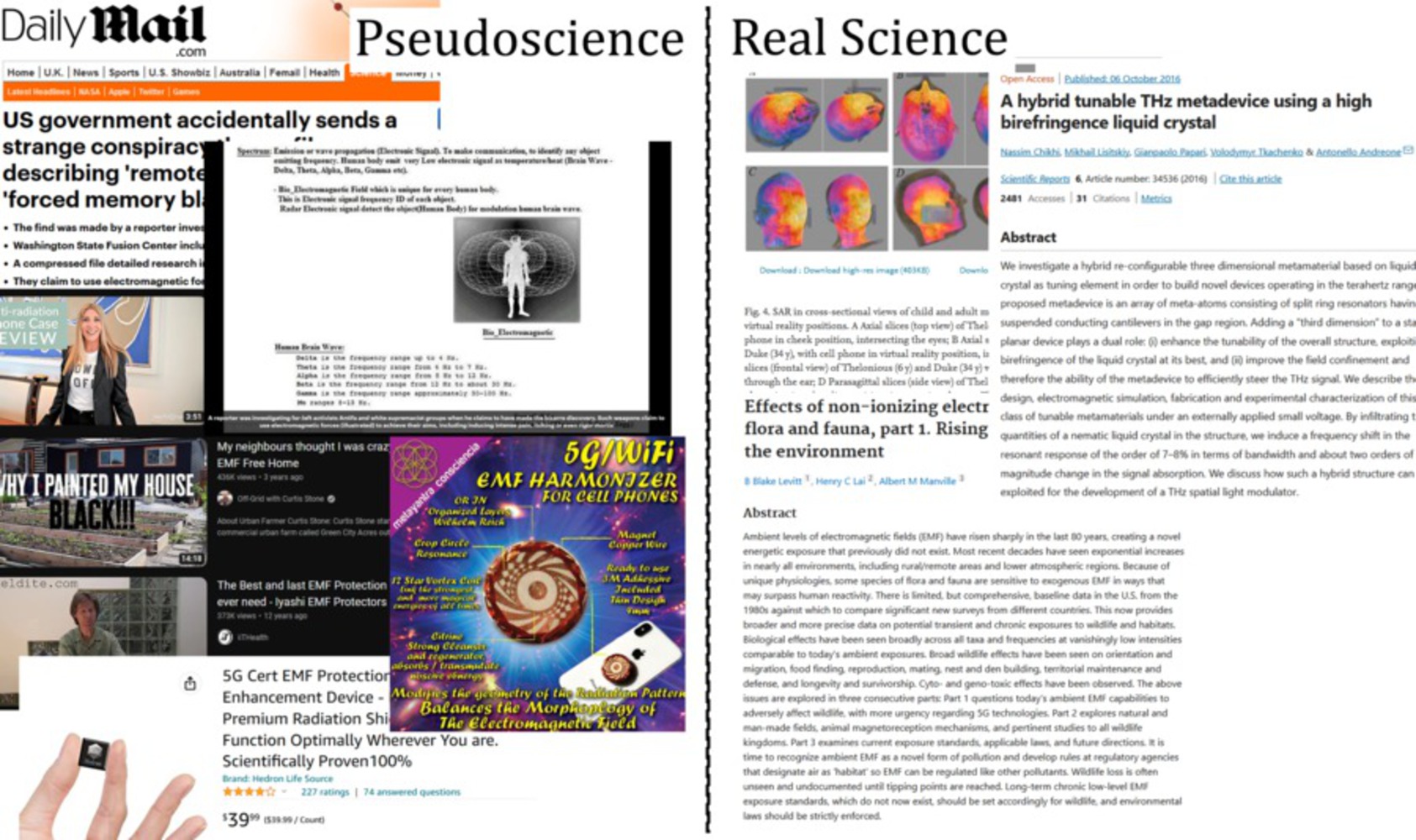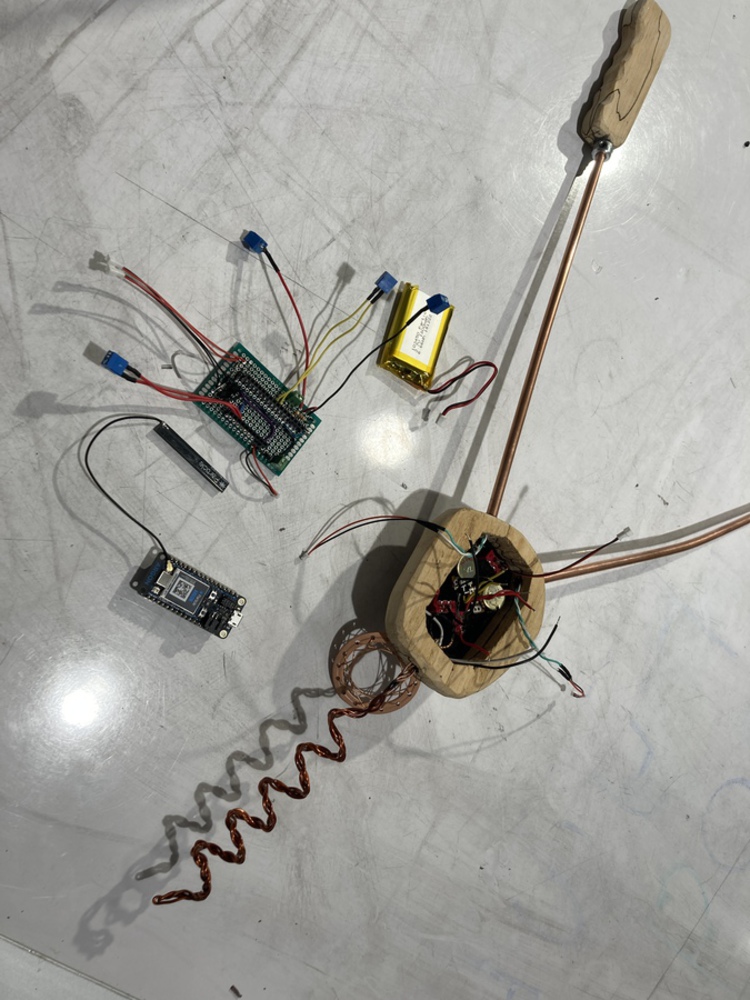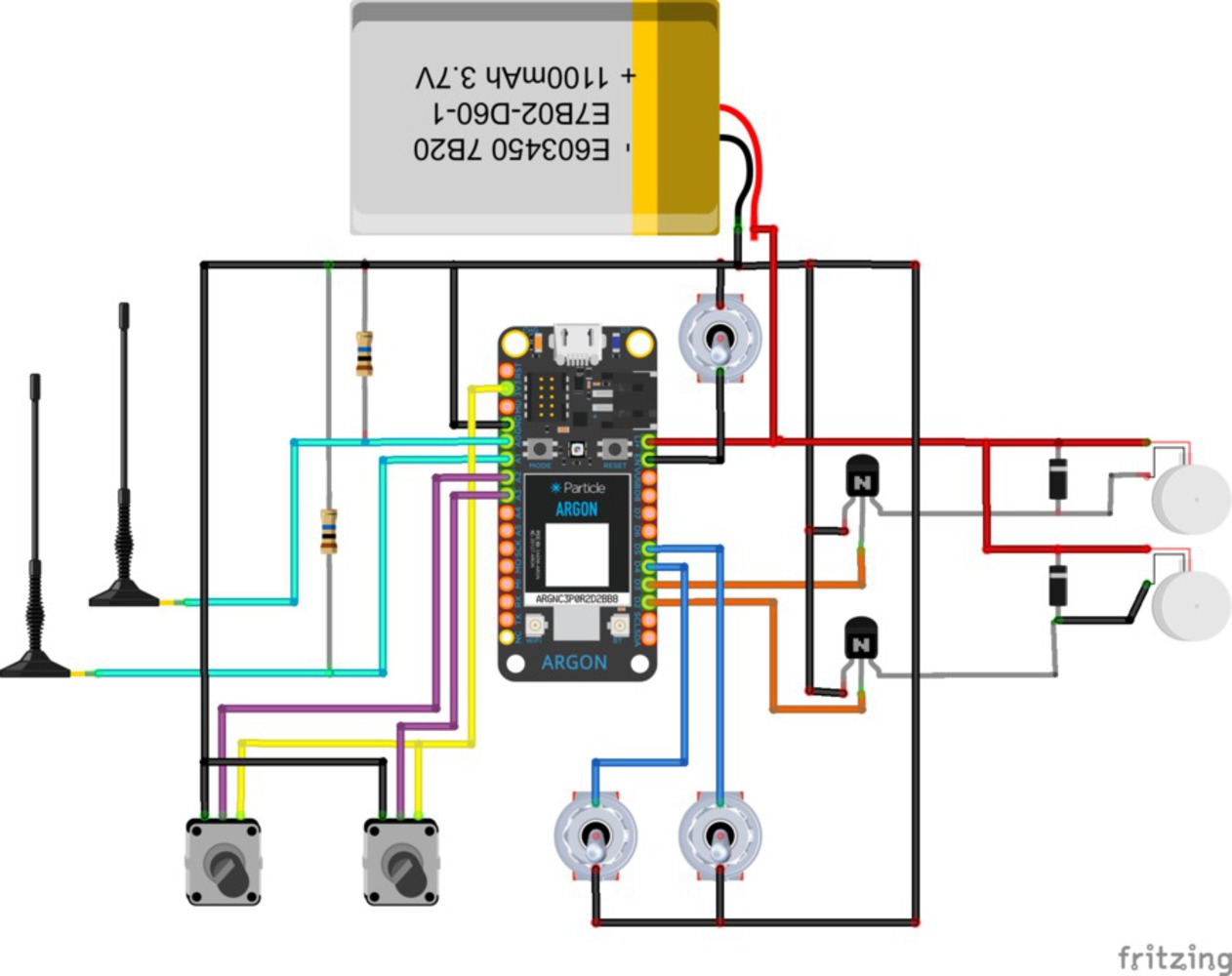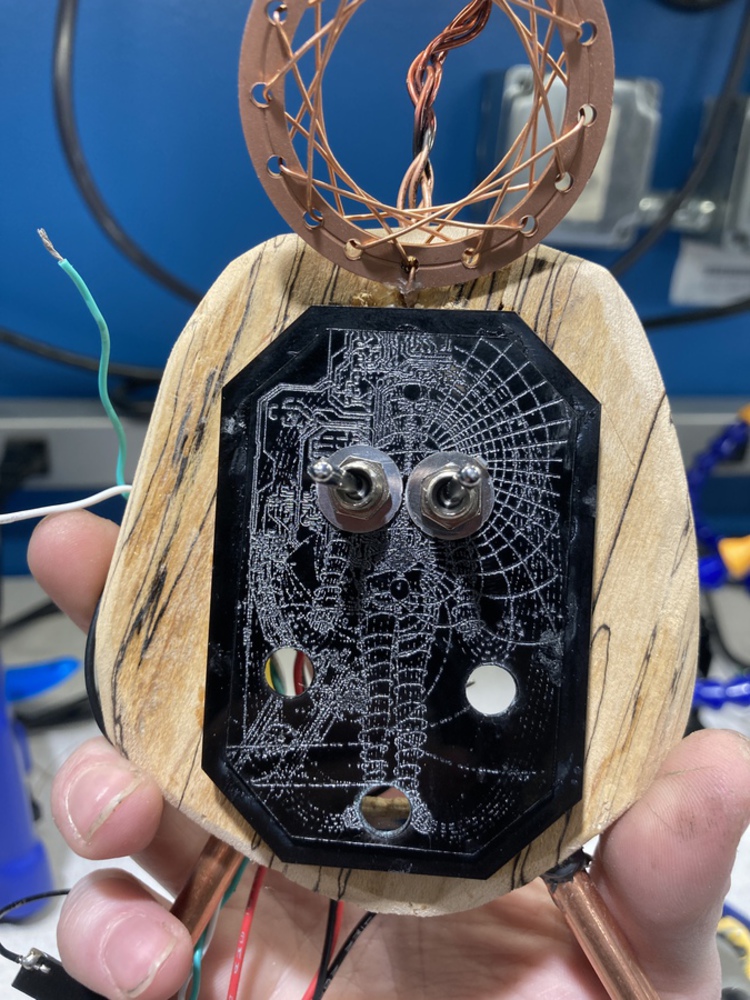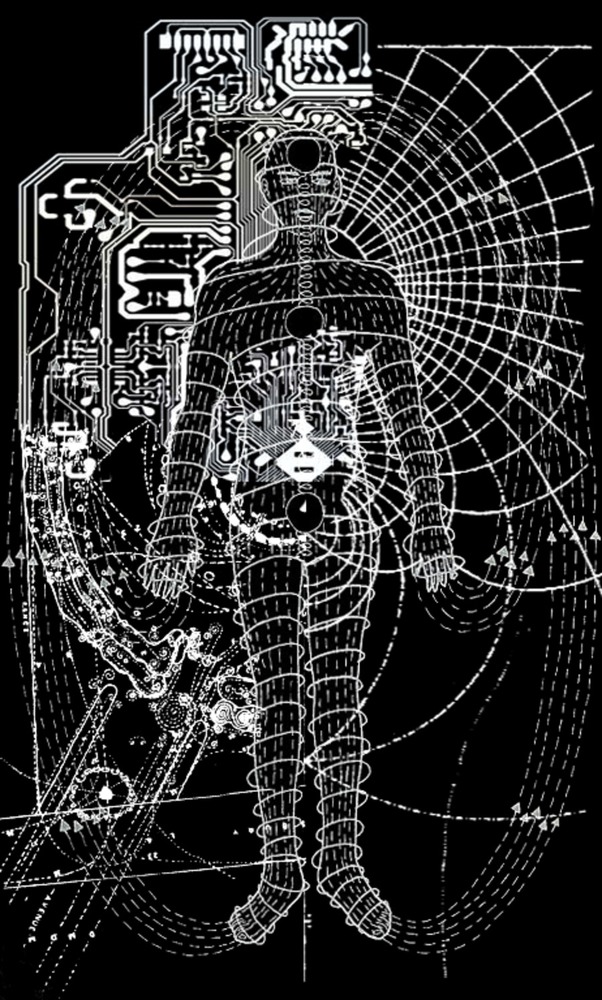The OUIFi Dowsing Rod is a critical design project that explores the connections between wireless communication, the science (and pseudoscience) of electromagnetic fields and esoteric practices. Specifically, the instrument is a kind of dowsing stick - a "device" historically used to locate ground water, hidden resources or other sources of energy. Dowsing has also been used in more modern times by petrochemical companies and the military - complicating its status as a occult hoax. Conversely, electromagnetic waves used for radio, wifi, bluetooth and cellular transmission and other communication technologies present a form of energy imperceptible to humans yet are a foundation of modern communication. These signals have sometimes been the subject of conspiratorial speculation that sometimes leaks into the mainstream such as the debate around "5g" signals causing health issues, psychological damage or even transmittouing the covid-19 virus. The name "OUIFi" is a combination of Ouija
(pronounced "wee-jee") board, a "tool" for communicating with spirits, and "Wi-Fi".
The instrument uses a Particle argon microcontroller equipped with antennas to measure the strength of electromagnetic fields (EMF) and wifi signals. The user holds the OUIFi dowser with the provided handles and in the presence of an electromagnetic field the handles will vibrate relative to the strength of the EMF. The device runs on a rechargeable LiPo battery making it entirely portable -allowing the user to explore their surroundings and discover different sources of EMF in their environment.
